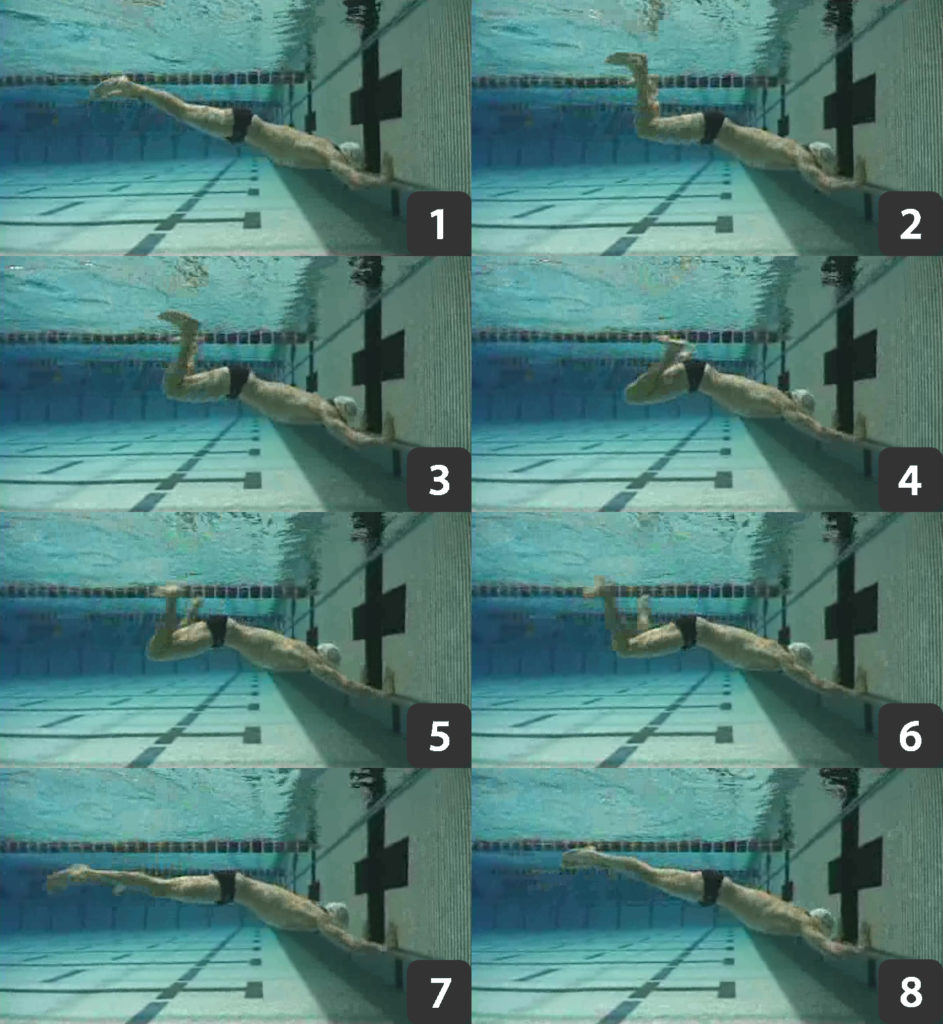The breaststroke kick exist on two form, the « first » breaststroke kick and the « sports » breaststroke kick.
The first breaststroke kick is the one teached in a first learning of the breaststroke, it’s not a very efficient kick but it is an easier one in terms of motricity, specially for kids.
The sports breaststroke kick is the one used by competitive swimmer.
We are only gonna develop the second one during this description:
- In a first place the swimmer will bring his hills on the side of his buttocks (this gonna allowed a minimum of frontal drag)(pic. 1 to 4 on Illustration 1).
- He also have to focus on keep his knees together (this gonna allowed a minimum of lateral drag).
- During this phase the swimmer will have to flex is ankle in the same time than he brings them back to his buttocks (pic. 4 and 5 on Illustration 1).
- Then he is gonna whip his lower leg and his ankle in order to close both of them (5 to 8 on Illustration 1).

Source : https://www.youtube.com/watch?v=4FKCYWGOC2M&t=52s
Now practice and enjoy !